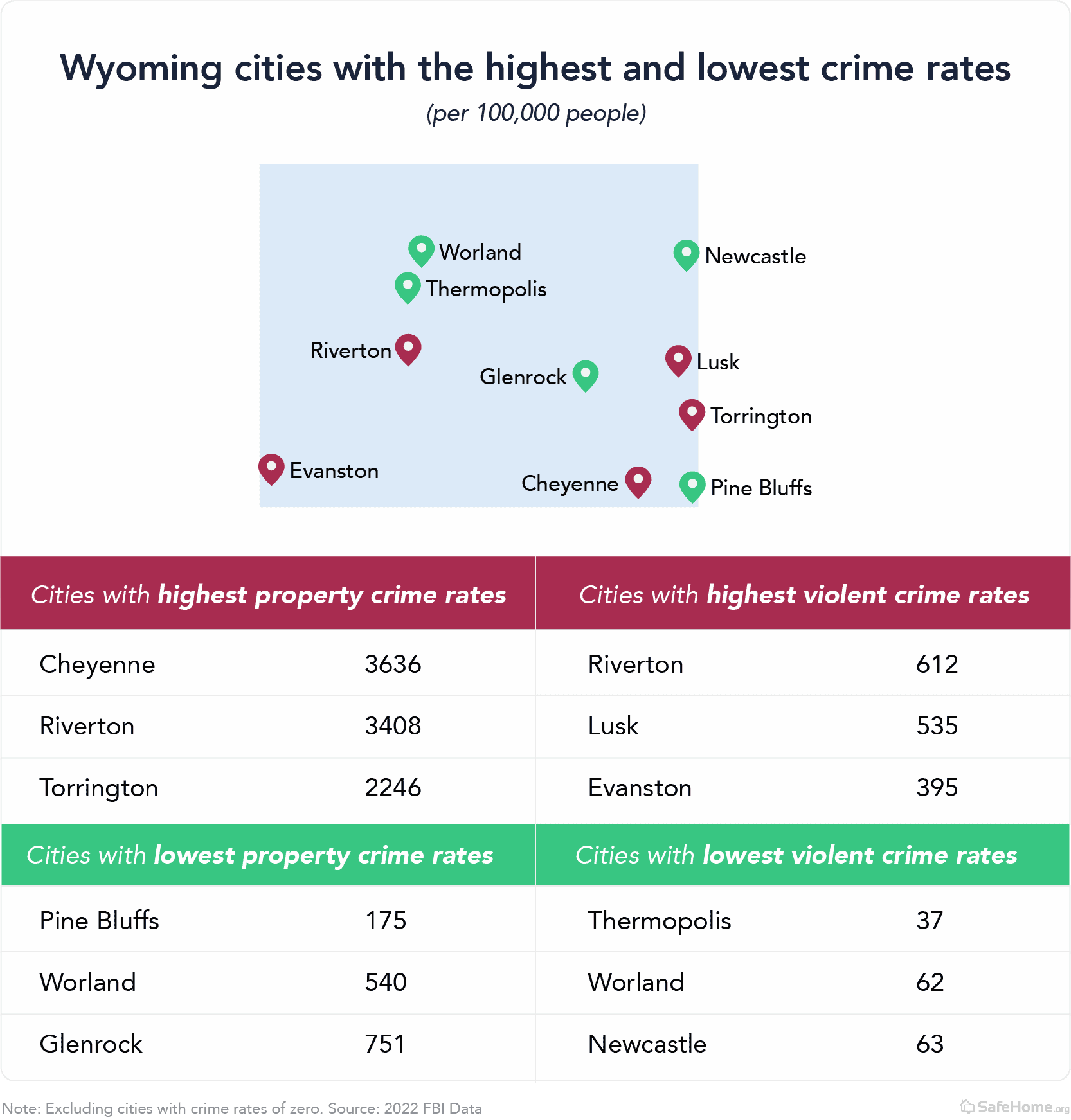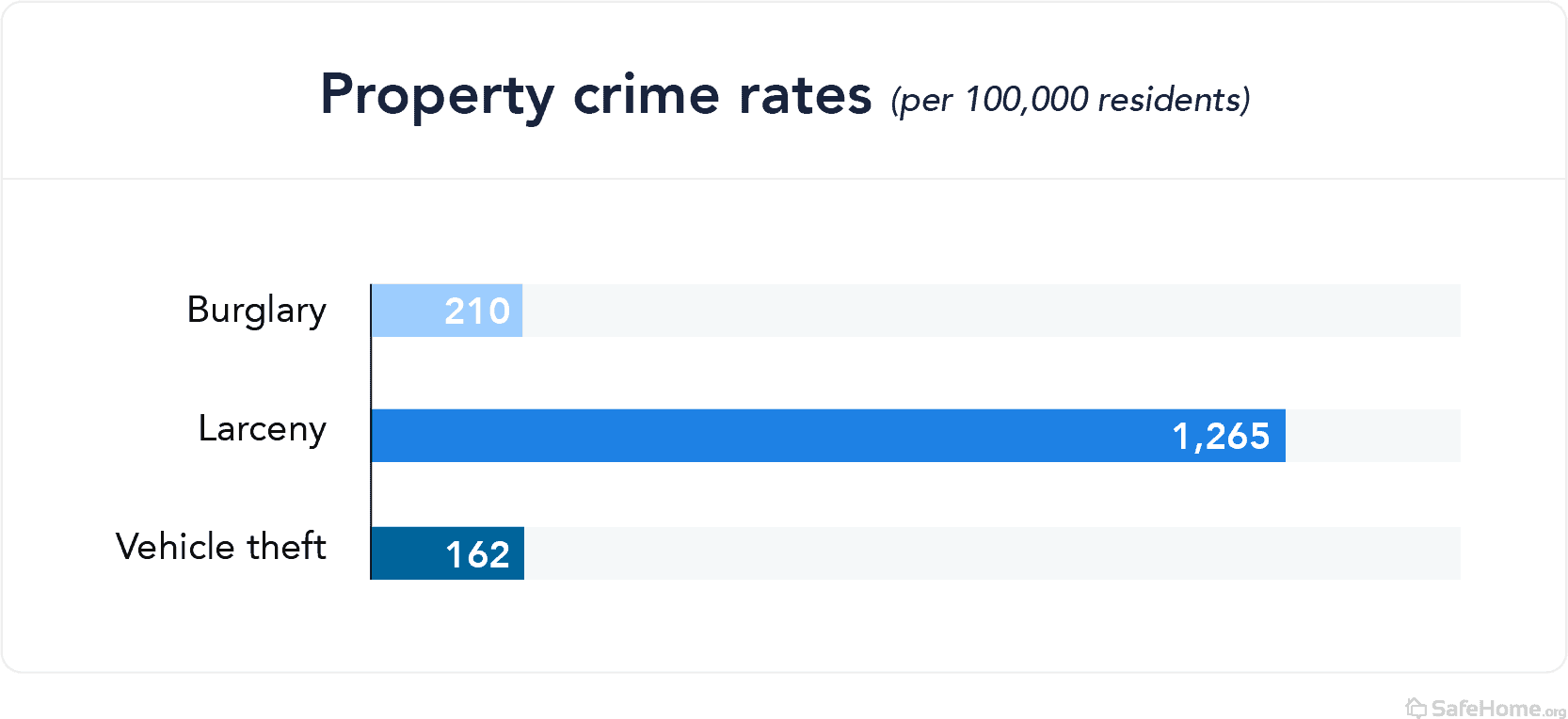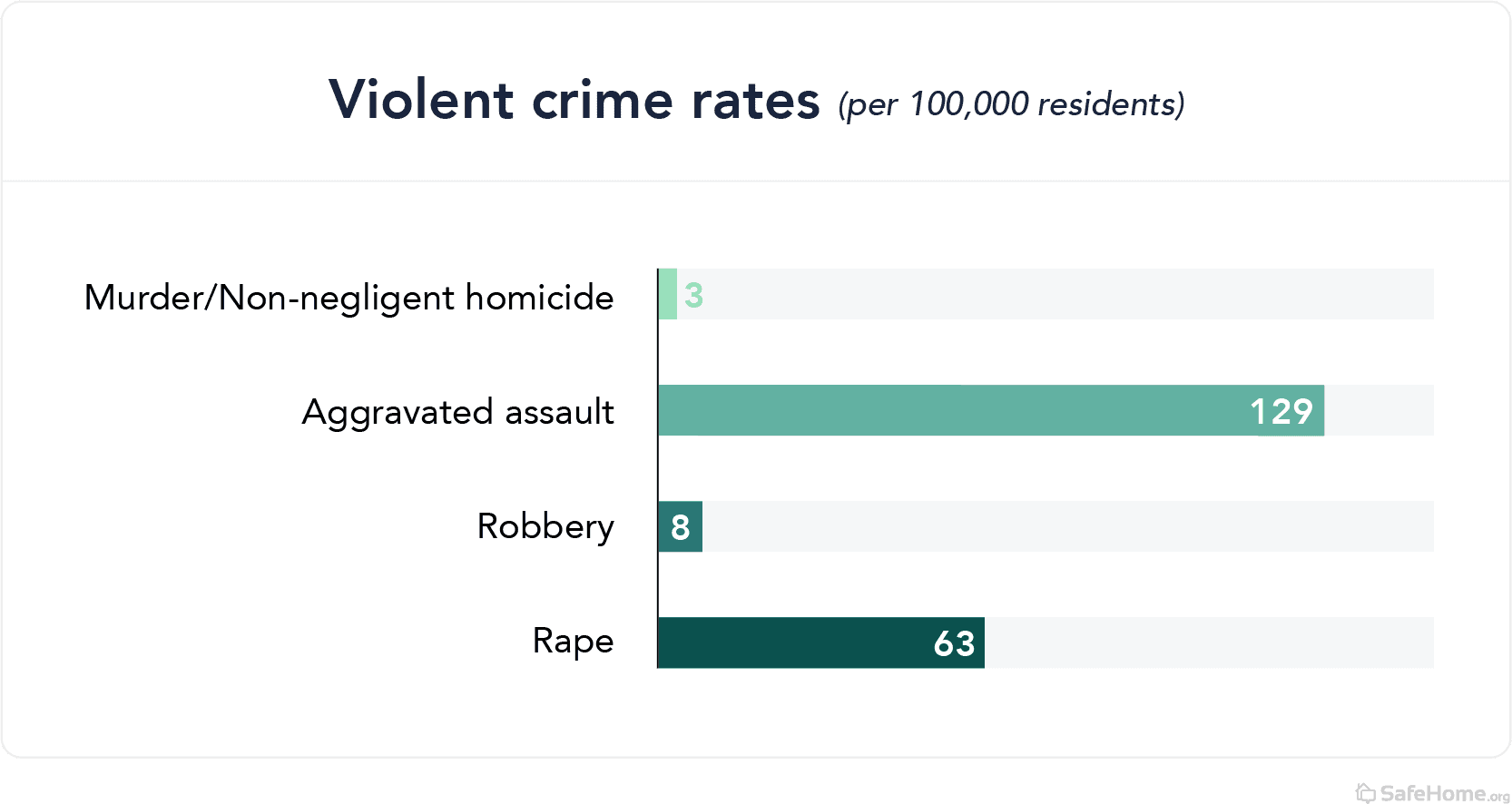Wyoming: The Best and Worst Cities for Crime

Wyoming ranks middle of the road among U.S. states when it comes to property crimes and is one of the safest states in the union as far as violent crime rates go. Wyoming is known for Yellowstone National Park and its famous geyser (Old Faithful), Grand Teton National Park, and the National Elk Refuge.
It’s called the Equality State because of its early history of advancing women’s liberation and equal rights. It’s also called the Cowboy State for its cattle industry. Nearly half of Wyoming’s land is owned by the federal government of the United States and the state draws millions of tourists every year to its seven national parks.
In addition to its massive tourism industry, Wyoming’s economy is dominated by mining and energy production. Although its population growth is steady, it’s higher than the national growth rate and climbing, so there is an influx of new residents to the Equality State every year.
 Even though Wyoming is one of the safer states in the union when it comes to violent crimes and property-related crimes, the steadily growing number of new arrivals means residents should stay vigilant and may even benefit from home security measures that fit their budget.
Even though Wyoming is one of the safer states in the union when it comes to violent crimes and property-related crimes, the steadily growing number of new arrivals means residents should stay vigilant and may even benefit from home security measures that fit their budget.
That’s especially true for residents living in bigger cities with more new arrivals and higher rates of violent and property crimes than the statewide average.
Due to the crime rates in these areas, Cheyenne, Riverton, Lusk, and Torrington residents may benefit most from taking an active approach to personal safety and home security.
Statewide Crime Trends in Wyoming
Crime in Wyoming is historically low and remains so against national averages.
The lower crime rates, the scenic natural beauty of the state, and its affordable cost of living (almost 8 percent lower than the national average cost of living) are enormous draws for new residents to move to Wyoming, whether they’re retirees, young families, or workers just starting their careers.
But residents who live in Wyoming’s more populated cities — and any newcomers moving to them — should be wary of the potential to become a victim without common-sense personal safety. Remember that home security measures prevent, protect against, and fend off violent and property crimes.
Property Crime in Wyoming
Property crime in Wyoming occurred at a rate of 1,637 per 100,000 people in the most recent year for which FBI data is available.
That’s 16 percent lower than the national average, which makes Wyoming number 34 in the U.S. for property crime.

Violent Crime in Wyoming
Violent crime in Wyoming occurred at an annual rate of 202 per 100,000 residents in the most recent year for which FBI statistics are available. That’s 47 percent lower than the national average, putting Wyoming at 46th nationwide for violent crime.

Our Data
Our data comes from comprehensive reporting compiled by the FBI and accessed via the Crime Data Explorer (CDE) website. Property and violent crime state figures were drawn from Table 5 of the 2022 Crime in the U.S. Report. Metropolitan figures were found in Table 6, “Crime in the U.S. by Metropolitan Statistical Area.” City-level figures were drawn from Table 8, “Offenses Known to Law Enforcement by State by City.” The population figures in that table are U.S. Census Bureau provisional estimates as of July 1, 2020.
Limitations: According to the FBI, the data in the publication tables may differ from those released on the Explorer Pages of the CDE. These variations are due to the difference in methodologies between the publication tables and data displayed on the CDE. Please note that crime statistics aren’t the sole measure of a city’s safety.
Navigate Crime Data by State
- Alabama
- Alaska
- Arizona
- Arkansas
- California
- Colorado
- Connecticut
- Delaware
- Florida
- Georgia
- Hawaii
- Idaho
- Illinois
- Indiana
- Iowa
- Kansas
- Kentucky
- Louisiana
- Maine
- Maryland
- Massachusetts
- Michigan
- Minnesota
- Mississippi
- Missouri
- Montana
- Nebraska
- Nevada
- New Hampshire
- New Jersey
- New Mexico
- New York
- North Carolina
- North Dakota
- Ohio
- Oklahoma
- Oregon
- Pennsylvania
- Rhode Island
- South Carolina
- South Dakota
- Tennessee
- Texas
- Utah
- Vermont
- Virginia
- Washington
- West Virginia
- Wisconsin
